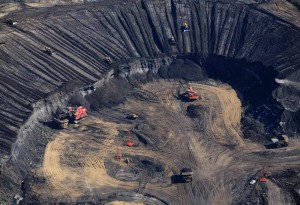 Those in the oil industry hoping for a reprieve from the volatility of the oil price had their hopes dashed yesterday as the price of oil dropped to its lowest level in four months.
Those in the oil industry hoping for a reprieve from the volatility of the oil price had their hopes dashed yesterday as the price of oil dropped to its lowest level in four months.
The latest reason given for the volatility is the ongoing problems in the Chinese equity markets, which continue to raise concerns about China’s short and long-term economic growth.
Whereas many people had been hoping for a rise in oil prices in the second half of this year, their biggest fear was for a new fall. This has now happened. “The much feared double-dip is here,” analysts at Bank of America Merrill Lynch have conceded.
There does not seem to be any hope of a respite soon, as the market remains essentially over supplied.
One cannot underestimate the huge impact the oil price plunge is having on the industry – including the majors. As the BBC reported this morning: “BP has reported a sharp fall in profits for the three months to the end of June as lower oil prices continue to hurt.”
There is no end in sight to the uncertainty and volatility. There are those who are now warning that “the latest dip is a precursor for $40 a barrel” which would be a “catastrophe”.
It certainly is bad news for the Canadian tar sands industry too. The country’s press is warning that their oil producers have had their “hopes dashed for a rebound in crude prices in the second half of the year”, as the price volatility continues.
Yesterday I pointed out that new research revealed that some $200 billion of projects had been on hold by the majors – with the tar sands accounting for some 30 per cent of deferred reserves.
Judith Dwarkin, chief energy economist at ITG Investment Research ULC, told the Canadian Globe and Mail that some producers could be heading for trouble.
“The cash is going to continue to be constrained, and it’s up to the banks how much they want to keep lending,” she said. “It’s pretty ugly and likely to remain so for a few more quarters.”
A $40 dollar barrel of oil is below half what many tar sands producers need to be profitable and so, if the oil price goes that low, it can only mean deep, deep trouble.
And let us not forget the tar sands are also being squeezed in another direction too: the need to act on climate change.
Maria van der Hoeven, from the International Energy Agency, warned the industry at a recent Energy and Mines Ministers’ Conference that the Canadian government as well as provincial governments in the country “will need to implement additional greenhouse gas reduction policies and measures”, if the tar sands are going to be continued to be exploited.
So Canada’s tar sands industry is stuck between a dirty rock and a hard place, with increasingly limited options.
It is not a good place to be.
